Many famous people have had connections to the Royal Forest of Dean, Herefordshire and Monmouthshire Here is a collection of famous people who are connected to the Royal Forest of Dean, Herefordshire and Monmouthshire and includes Henry
V, Lascelles Abercrombie, Rupert Brooke, John Challis, Monty Don, John
Drinkwater, Duke of Monmouth, Winifred Foley, John Frost, Wilfred Gibson,
Nell Gwynne, Edna Healey, James Horlick, William Horlick, Albert Lee, John Masefield,
Joe Meek, Geoffrey of Monmouth, Robert Mushet ,Horatio Lord Nelson, Frank
Oz, Dennis Potter, Charles Rolls, Frederick Royce, Clifford Rose, J K
Rowling, Edward Thomas, Dick Whittington, Sir Jimmy Young
|
King Henry V
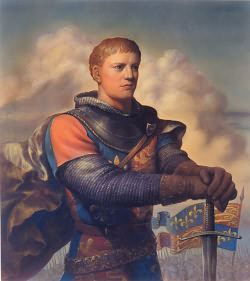 Born in Monmouth Castle in 1387, he is immortalized by
his campaigns against the French and the remarkable victory at Agincourt.
As a boy he loved outdoor pursuits and at the age of 10 he could ride,
swim and bend a bow and hunt: he was a fine scholar, an accomplished
musician, a chivalrous and bold monarch who proved to be a shrewd
tactician - both militarily and politically. In addition to securing a
temporary peace with France, Henry maintained control over the warring
Owain Glyndwr whose armies sought to win territory in the Welsh Marches. Born in Monmouth Castle in 1387, he is immortalized by
his campaigns against the French and the remarkable victory at Agincourt.
As a boy he loved outdoor pursuits and at the age of 10 he could ride,
swim and bend a bow and hunt: he was a fine scholar, an accomplished
musician, a chivalrous and bold monarch who proved to be a shrewd
tactician - both militarily and politically. In addition to securing a
temporary peace with France, Henry maintained control over the warring
Owain Glyndwr whose armies sought to win territory in the Welsh Marches.
Henry's impressive victories at Harfleur and Agincourt raised him to
heroic status in England, but the Treaty of Troyes (1420) was only
achieved by a fortunate alliance with Philip of Burgundy. According to the
treaty, Henry was married to Charles VI's daughter, became regent of
France, and was named heir to the throne. Even so, Armagnac nobles ignored
the treaty, making a third expedition necessary--during which Henry became
sick with dysentery and died, only 6 weeks before Charles' death would have
made him king of France. Most historians agree that Henry's goal of
conquering France was far beyond English resources. Thus, although Henry's
premature death at the height of his success assured personal glory, his
short-sighted ambitions left his son's administration burdens heavy enough
to make civil strife inevitable. |
Lascelles Abercrombie
Dymock Poet:
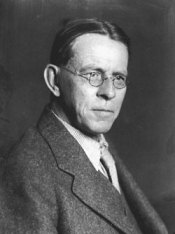 Born: Jan. 9, 1881 - Ashton-upon-Mersey, Cheshire, England Born: Jan. 9, 1881 - Ashton-upon-Mersey, Cheshire, England
Died:
Oct. 27, 1938 - London, England
Educated at Malvern College and Owen's
College, Manchester where he studied chemistry, Abercrombie was drawn to
literature and left college without a degree. In 1908, he began to write
for the Liverpool Courier. That year he also published his first book,
Interludes and Poems. In 1912, his poetic drama, The Sale of St. Thomas,
appeared in volume 1 of Edward Marsh's Georgian Poetry. In 1911, he moved
to Gloucestershire and entered a circle of poets that included Rupert
Brooke, John
Drinkwater and Wilfred
Gibson.
Together they collaborated on the Georgian journal New
Numbers. The outbreak of war in 1914, however, ended its publication after
only four volumes. Following the war, Abercrombie turned to literary
criticism and a scholastic career which included lectureships at Oxford,
Leeds and Liverpool, He died from diabetes complications in 1938. |
Rupert Brooke (1887-1915)
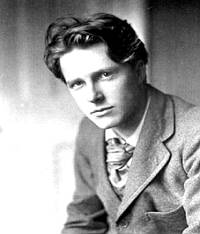 Dymock Poet: English poet Rupert Chawner Brooke was born the son of
the Rugby School's housemaster, Brooke excelled in both academics and
athletics. A lover of verse since the age of nine, he won the school
poetry prize in 1905. A year later, he attended King's College, Cambridge,
where he was known for his striking good looks, charm, and intellect. he
befriended Winston Churchill, Henry James, and members of the Bloomsbury
Group, including Virginia Woolf. Dymock Poet: English poet Rupert Chawner Brooke was born the son of
the Rugby School's housemaster, Brooke excelled in both academics and
athletics. A lover of verse since the age of nine, he won the school
poetry prize in 1905. A year later, he attended King's College, Cambridge,
where he was known for his striking good looks, charm, and intellect. he
befriended Winston Churchill, Henry James, and members of the Bloomsbury
Group, including Virginia Woolf.
Brooke received a fellowship at
King's College and spent time in both Cambridge and London. In 1912 he
compiled an anthology entitled Georgian Poetry, 1911-12, with Edward
Marsh. The Georgian poets wrote in an anti-Victorian style, using rustic
themes and subjects such as friendship and love. While critics viewed
Brooke's poetry as too sentimental and lacking depth, they also considered
his work a reflection of the mood in England during the years leading up
to World War I. He returned to England at the outbreak of World War I and
enlisted in the Royal Naval Division. His most famous work, the sonnet
sequence 1914 and Other Poems, appeared in 1915. Later that year, after
taking part in the Antwerp Expedition, he died of blood poisoning from a
mosquito bite while en route to Gallipoli with the Navy. He was buried on
the island of Skyros in the Aegean Sea.
|
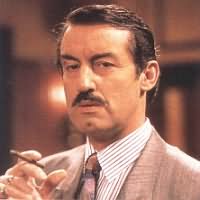 John Challis
John Challis is best known as Possibly the nation’s
favourite (and tightest) second-hand car dealer, Only Fools and Horses’
Boycie is a classic among comedy characters. Alongside his screen wife
Marlene (Sue Holderness), Challis has recently filmed the new John
Sullivan comedy The Green Green Grass, which sees them living in a rural
farm in Shropshire. He confesses his heart is in the theatre and he’s
appeared with Sue Holderness in a series of Alan Ayckbourn plays. His TV
career boasts performances in The Sweeney, Citizen Smith, Heartbeat and
Soldier Soldier to name a few. Home to John and his wife Carol is a 12th
century, eight-bedroom pile in Wigmore Abbey which they’re
renovating. |
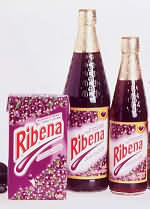 Dr Vernon Charley
Dr Vernon Charley and manufacturer H.W.Carter & Co started production of a blackcurrant syrup, later to be known as Ribena.
Production moved to the new Royal Forest Factory at Coleford in the autumn of 1947 in the Forest
of Dean, where production takes place today.
|
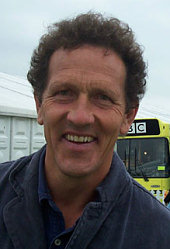 Monty Don
Garden-guru Monty Don follows in the footsteps of
gardening greats Percy Thrower, Geoff Hamilton and Alan Titchmarsh, as the
main presenter of Gardeners' World. Monty has a two-acre garden in
Herefordshire, where he lives with his wife Sarah and their three
children. He has also recently bought a farm in wales. He particularly
loves his spring garden, which is filled with flowers from February to
late May. He says: "When everything else is grey and miserable, it's full
of hope." It's difficult for him to name his favourite plant because he
has so many. Slugs are his biggest gardening heartache, and he admits that
he's hopeless with houseplants. Monty's TV work includes five years of
This Morning (Granada), and Real Gardens, Fork to Fork, Lost Gardens and
Don Roaming (all Channel 4) as well as Gardeners' World. His books include
The Prickotty Bush, The Weekend Gardener, The Sensuous Garden, Gardening
Mad, Urban Jungle, Fork to Fork and The Jewel Garden. |
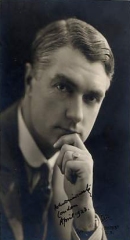 John Drinkwater 1882-1937
Dymock Poet: Poet and playwright. Born at Leytonstone, Essex, the son
of a schoolmaster who turned to acting. He grew up in Oxfordshire and, on
leaving school at 15, became an insurance clerk in Nottingham, moving with
the company in 1901 to Birmingham. He found this work un-interesting and
turned to literature, his first volume of poetry being published when he
was twenty-one. A founder member of the Pilgrim Players he went on to
become the first manager of the Birmingham Repertory Theatre. John
Drinkwater's first full-length play was Rebellion (1914) but his first
real success writing for the theatre came in 1918 with Abraham Lincoln. He
followed this with Mary Stuart (1921) Oliver Cromwell (1921) and Bird in
hand (1927), a popular comedy. He also wrote stories for children and
critical studies on William Morris, Algernon Swinburne and Samuel
Pepys. |
Duke of Monmouth
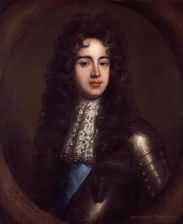 Monmouth's Rebellion was not by
Monmouth's placid citizens, but by James Scott, a Duke of Monmouth.
On the 11th June 1685 the exiled Duke of Monmouth, illegitimate son
of Charles II, landed at Lyme Regis in Dorset with a small force in an
attempt to topple the new Catholic king James II. Monmouth was popular
with a large section of the English people and many would support his
rebellion in an attempt to recover religious and political rights which
had been progressively eroded since the Restoration of Charles II. This
was to be a concerted effort between Scots and English, for the Duke of
Argyll had set sail from Holland in May to initiate a rebellion in
Scotland. But the planning was inadequate, their invasion preparations had
been discovered by the crown and Monmouth's forces were few in number and
poorly equipped. Argyll's Scottish rebellion was stifled almost before it
could begin and within 36 hours the news of Monmouth’s landing had reached
the king and his military commanders in London. The rebels' only chance
was to raise, equip and train forces as they marched and to rapidly secure
Bristol, England's second city, before the royal army could counter
them.This West Country rabble was defeated at
Sedgemoor and he lost his head. James lost the throne three years later. Monmouth's Rebellion was not by
Monmouth's placid citizens, but by James Scott, a Duke of Monmouth.
On the 11th June 1685 the exiled Duke of Monmouth, illegitimate son
of Charles II, landed at Lyme Regis in Dorset with a small force in an
attempt to topple the new Catholic king James II. Monmouth was popular
with a large section of the English people and many would support his
rebellion in an attempt to recover religious and political rights which
had been progressively eroded since the Restoration of Charles II. This
was to be a concerted effort between Scots and English, for the Duke of
Argyll had set sail from Holland in May to initiate a rebellion in
Scotland. But the planning was inadequate, their invasion preparations had
been discovered by the crown and Monmouth's forces were few in number and
poorly equipped. Argyll's Scottish rebellion was stifled almost before it
could begin and within 36 hours the news of Monmouth’s landing had reached
the king and his military commanders in London. The rebels' only chance
was to raise, equip and train forces as they marched and to rapidly secure
Bristol, England's second city, before the royal army could counter
them.This West Country rabble was defeated at
Sedgemoor and he lost his head. James lost the throne three years later.
|
EMF (British indie Dance Band)
 EMF were a British indie dance band that came to prominence at the end of the 1980s and the early 1990s. The band came from the Forest
of Dean in Gloucestershire. Their first single, "Unbelievable" got to number 3 in the UK charts and was a number one hit on the U.S. Billboard Hot 100 chart. Their debut album, Schubert
Dip, went to number 3 in the UK Albums Chart. EMF were a British indie dance band that came to prominence at the end of the 1980s and the early 1990s. The band came from the Forest
of Dean in Gloucestershire. Their first single, "Unbelievable" got to number 3 in the UK charts and was a number one hit on the U.S. Billboard Hot 100 chart. Their debut album, Schubert
Dip, went to number 3 in the UK Albums Chart.
- James Atkin (vocals, guitars), born James Saul Atkin, 28 March 1969, in Birmingham.
- Ian Dench (guitars, keyboards), born 7 August 1964, in Cheltenham.
- Zac Foley (bass), born Zachary Sebastian Rex James Foley, 9 December 1970, in Gloucester; Died on 2 January 2002.
- Derry Brownson (keyboards and samples), born 10 November 1970, in Gloucester.
- Mark Decloedt (drums), born 26 June 1967, in Gloucester.
|
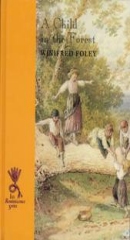 Winifred Foley
Winifred Foley was born in 1914 in the small village of
Brierley, near Cinderford, and the daughter of a forest of dean miner, is
another life long resident of the forest to write an autobiographical
account of her life. Her celebrated ' Forest Trilogy' tells the story of a
period of great social and landscape change in the Forest. In the
publication ' A Child in the Forest' Foley describes the landscape as; "
Ten by twenty moles of secluded, hilly country; ancient woods of oak and
fern; and among them small coal mines, small market towns, villages and
farms. we are content to be a race apart, made up mostly of families who
had lived in the forest for generations".
The famous forest trilogy
"A Child in the Forest", : "Back to the Forest" : "No Pipe Dreams for
Father" |
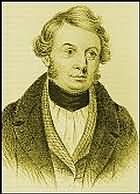 John Frost (Chartist)
John Frost was born in Newport, Wales, on 25th May, 1784.
John's father died when he was a child and he was raised by his
grandparents. After a brief period at school he became an apprentice boot
maker to his grandfather. At the age of sixteen he left home and became a
tailor in Cardiff. He then spent periods working as a tailor in Bristol
and London. Frost returned to Newport in 1806 to start his own business.
John Frost - Ex-mayor of Newport, now the leader of the Chartists in South
Wales. He started as a Moral Force Chartist but thought that the
government would not listen. He became a Physical Force Chartist instead.
He along with Zephaniah Williams and William Jones believed that the only
way to win was by getting rid of the government by an armed uprising. |
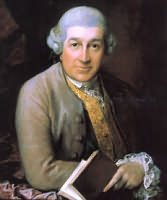 David Garrick
Born: 19-Feb-1717
Birthplace: Hereford, Herefordshire, England
Died: 20-Jan-1779
Remains: Buried, Poet's Corner, Westminster Abbey, London
English actor and theatrical manager, descended from a good French Protestant family named Garric or Garrique of Bordeaux, which had settled in England on the revocation of the Edict of Nantes. His father, Captain Peter Garrick, who had married Arabella Clough, the daughter of a vicar choral of Lichfield cathedral, was on a recruiting expedition when his famous third son was born at Hereford on the 19th of February 1717. |
Wilfrid Wilson Gibson (1878 - 1962)
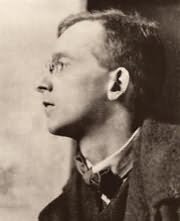 Dymock Poet: Wilfrid
Gibson was born at Hexham in Northumberland and educated privately. A well known
poet before the war - he published his first collection of poems in 1902. A married
man with children at the outbreak of the Great War, Wilfrid Gibson is one of the
few war poets to write from the perspective of an older man. Dymock Poet: Wilfrid
Gibson was born at Hexham in Northumberland and educated privately. A well known
poet before the war - he published his first collection of poems in 1902. A married
man with children at the outbreak of the Great War, Wilfrid Gibson is one of the
few war poets to write from the perspective of an older man.
The summer of 1914
stands in popular memory as an image of a lost, idyllic world, about to be shattered
by the butchery of Flanders. The Georgian poets who captured this fragile
moment – among them Rupert
Brooke, John Masefield and the young Wilfrid Owen – seem almost conscious
of their role as the architects of nostalgia, in lyric poems which celebrate
a timeless English countryside. In reality, as well as in imagination, a
leading group of these poets were living in the countryside in 1913-14.
These were the so-called Dymock Poets,
a community of writers who settled briefly in the village of Dymock,
in north Gloucestershire. Lascelles
Abercrombie and Wilfrid Gibson, the founders of the community, were
joined by Robert Frost in 1914; visitors in the months that followed
included Rupert
Brooke, Edward
Thomas, John
Drinkwater and Eleanor Farjeon. Four issues of a literary periodical,
New Numbers, featuring the work of Abercrombie, Brooke,
Gibson and Drinkwater, were produced before the
First World War brought about the group's demise. |
Ivor Gurney (28.8.1890 - 26.12.1937)
An English composer and poet.
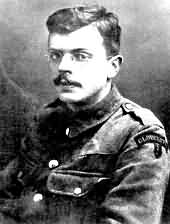 Born at 3 Queen Street, Gloucester in 1890, Gurney began composing music at the age of 14 and won a scholarship to the Royal College of Music in 1911. Gurney wrote hundreds of poems and more than 300 songs as well as instrumental music.
He set only a handful of his own poems, the best known being Severn Meadows. His best-known compositions include his Five Elizabethan Songs (or 'The Elizas' as he called them) and the song-cycles Ludlow
and Teme and The Western Playland, both settings of poetry by A. E. Housman. Gurney was "a lover and maker of beauty", as it said on his gravestone. Born at 3 Queen Street, Gloucester in 1890, Gurney began composing music at the age of 14 and won a scholarship to the Royal College of Music in 1911. Gurney wrote hundreds of poems and more than 300 songs as well as instrumental music.
He set only a handful of his own poems, the best known being Severn Meadows. His best-known compositions include his Five Elizabethan Songs (or 'The Elizas' as he called them) and the song-cycles Ludlow
and Teme and The Western Playland, both settings of poetry by A. E. Housman. Gurney was "a lover and maker of beauty", as it said on his gravestone.
Gurney is known both as a poet and composer and his reputation in both arts has continue to rise. Edmund Blunden, at the urging of composer Gerald Finzi, assembled the first collection of Gurney's poetry
which was published in 1954. This was followed by P. J. Kavanagh's Collected Poems, first published in 1982 and reissued in 2004. It remains the best edition of Gurney's poetry. Gurney is regarded as
one of the great English World War I poets, and like the others of them, such as Edward Thomas whom he admired, he often contrasted the horrors of the front line with the beauty and tranquillity of his
native English landscape. |
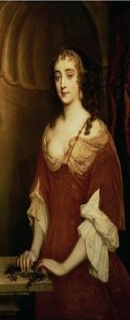 Nell Gwyn
King Charles II mistress hails from Hereford - anybody in the city will
tell you that, even though Oxford and London also lay claim to her. After
an early career as a street trader, Nell became a famous actress where she
caught the King's eye. There are several memorials to her in the city -
the former Edgar Street theatre was named after her, and there are several
plaques in her name near the cathedral.
Nell Gwyn (or Gwynn or Gwynne),
born Eleanor, (2 February 1650 - 14 November 1687), was one of the
earliest English actresses to receive prominent recognition, and a
long-time mistress of King Charles II. Called "pretty, witty Nell" by
Samuel Pepys, she has been called a living embodiment of the spirit of
Restoration England and has come to be considered a folk heroine, with a
story echoing the rags-to-royalty tale of Cinderella. Elizabeth Howe, in
The First English Actresses, says she was "the most famous Restoration
actress of all time, possessed of an extraordinary comic talent."[1] By
Charles, Nell had two sons, Charles Beauclerk (1670-1726) and James
Beauclerk (1671-1680). Charles was the first Earl of Burford, later Duke
of St. Albans. |
Frederick William Harvey
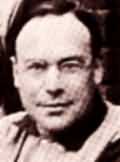 Frederick William Harvey (March 26, 1888 – February 13, 1957) was an English poet, known for poems composed in prisoner-of-war camps at Krefeld and Gütersloh that were sent
back to England, during World War I. Frederick William Harvey (March 26, 1888 – February 13, 1957) was an English poet, known for poems composed in prisoner-of-war camps at Krefeld and Gütersloh that were sent
back to England, during World War I.
He was born in Hartpury, Gloucestershire. He was educated at the King's School, Gloucester, where he formed a close friendship with Ivor Gurney, and then at Rossall School. Gurney and
Herbert Howells, another local composer, would set a number of his poems to music.
The story of F.W. Harvey’s war is in itself remarkable. Joining the 5th Battalion of the Gloucestershire Regiment only days after war was declared, he was among the first Territorials
to land in France. As a Lance-Corporal he was awarded the Distinguished Conduct Medal for ‘conspicuous gallantry’ and was commissioned shortly afterwards. He survived the Somme
offensive, but in August 1916 was captured by the Germans while reconnoitring alone behind enemy lines. He spent the rest of the war in prisoner-of-war camps – more than two years
of spirit-sapping demoralisation made bearable only by comradeship, faith and the humour which he saw as an act of courage, and punctuated by heroic escape attempts.
But Harvey was more than just a tough soldier. He was a poet of considerable distinction, a contemporary of Owen, Sassoon and Thomas, and a close friend of Ivor
Gurney. When out of the
trenches ‘at rest’, or in captivity, he wanted nothing more than to be given an interval of quiet in which to set down in verse his longing for his Gloucestershire homeland,
his outrage at the waste of war, his joy in comradeship, his humour and his unflinching faith. |
Edna Healey
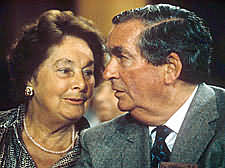 Edna Healey wife of former politician Dennis Healey and
herself an author in her own right.has been married to former Chancellor
Denis Healey for more than 50 years and has seen power and opposition from
the inside. The Healey's don’t have some special inheritance. You need to
go back to 1918 when Edna was born in Coleford, in the Forest of Dean, the
daughter of a quarry crane driver with a passion for music, but whose
school had no library where she could study for university. She describes
it as a privileged childhood compared with the hard-pressed mining
families of the Forest, who were turned away from church because they were
so scruffy. The two-day Coleford Fair was the highlight of the year and
Bon Marche, in Gloucester, provided a delectable meal for just nine pence.
From that enclosed world, where they picked hazelnuts and chestnuts in the
Forest every autumn, she made it to Oxford, in 1936, where her
contemporaries included Ted Heath, Roy Jenkins, Tony Crosland and the
Marxist historian Eric Hobsbaum. She was – and is – so much more than part
of the pattern of a doyen politician’s life, something significantly more
than a mere wife at Westminster. She may not have become first lady at No
10, but she remains the First Lady of the Forest. Edna Healey wife of former politician Dennis Healey and
herself an author in her own right.has been married to former Chancellor
Denis Healey for more than 50 years and has seen power and opposition from
the inside. The Healey's don’t have some special inheritance. You need to
go back to 1918 when Edna was born in Coleford, in the Forest of Dean, the
daughter of a quarry crane driver with a passion for music, but whose
school had no library where she could study for university. She describes
it as a privileged childhood compared with the hard-pressed mining
families of the Forest, who were turned away from church because they were
so scruffy. The two-day Coleford Fair was the highlight of the year and
Bon Marche, in Gloucester, provided a delectable meal for just nine pence.
From that enclosed world, where they picked hazelnuts and chestnuts in the
Forest every autumn, she made it to Oxford, in 1936, where her
contemporaries included Ted Heath, Roy Jenkins, Tony Crosland and the
Marxist historian Eric Hobsbaum. She was – and is – so much more than part
of the pattern of a doyen politician’s life, something significantly more
than a mere wife at Westminster. She may not have become first lady at No
10, but she remains the First Lady of the Forest.
|
Jame Horlick & William Horlick
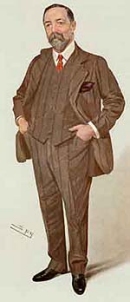 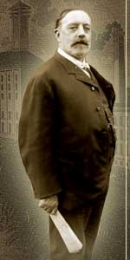 HORLICK (1844-1921) published in Vanity Fair magazine,
London, England, March 10, 1909. James Horlick moved back to England in
the 1890s to manage the company’s European, Asian, and African affairs.
The company began to manufacture malted milk in England in 1906. Spun off
as a separate company after James’ death, Horlick’s, Ltd. of England
eventually purchased its American counterpart in 1945. ID 23706 HORLICK (1844-1921) published in Vanity Fair magazine,
London, England, March 10, 1909. James Horlick moved back to England in
the 1890s to manage the company’s European, Asian, and African affairs.
The company began to manufacture malted milk in England in 1906. Spun off
as a separate company after James’ death, Horlick’s, Ltd. of England
eventually purchased its American counterpart in 1945. ID 23706
Brothers James and William Horlick of England founded a
company that carried the name of Racine, Wisconsin to the farthest reaches
of the globe and changed the way America ate.
London pharmacist James Horlick developed ideas for an
improved, wheat and malt-based nutritional supplement for infants.
Despairing of his opportunities in England, James joined his brother
William, who had come to Racine to work at a relative’s quarry. In 1873
James and William formed a company to manufacture their own brand of
infant food. Ten years later, they earned a patent for a new formula
enhanced with dried milk. The company originally marketed its new product
as “Diastoid,” but trademarked the name “malted milk” in 1887.
Despite its origins as a health food for infants and
invalids, malted milk found several unexpected markets. Explorers
appreciated its lightweight, non-perishable, high-calorie qualities and
began taking malted milk on treks worldwide. William Horlick became a
patron of Antarctic exploration, and in return, Admiral Richard E. Byrd
named a mountain range in Antarctica after the Racine manufacturer.
Back at home, healthy people began drinking Horlick’s
product simply for the taste. Malted milk became a standard offering of
soda fountains across the country and found even greater popularity when
mixed with ice cream into a “malted.” The fondly remembered “malt shops”
of communities large and small owe their very name to the Horlick brothers
of Racine.
co-founders of the malted milk drink still popular
today |
Herbert Norman Howells (17.10.1892 – 23.2.1983)
An English composer, organist, and teacher.
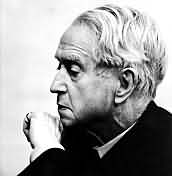 Howells was born in Lydney, Gloucestershire, and was the youngest of six children born to Oliver and Elizabeth Howells. His father was an amateur organist, and Herbert himself showed
early musical promise. He studied first with Herbert Brewer at Gloucester Cathedral, as an articled pupil alongside Ivor Novello and Ivor
Gurney, the celebrated English songwriter and
poet, with whom he became great friends. Howells was born in Lydney, Gloucestershire, and was the youngest of six children born to Oliver and Elizabeth Howells. His father was an amateur organist, and Herbert himself showed
early musical promise. He studied first with Herbert Brewer at Gloucester Cathedral, as an articled pupil alongside Ivor Novello and Ivor
Gurney, the celebrated English songwriter and
poet, with whom he became great friends.
In 1915 he was diagnosed with Graves' disease and given six months to live. Since doctors believed that it was worth taking a chance on a previously untested treatment, he became the first
person in the country to receive radium treatment.
In his twenties and thirties his compositional output focussed chiefly on orchestral and chamber music, including two piano concertos.
In later life Howells was awarded an honorary doctorate from Cambridge University, and was made a Companion of Honour in 1972. He died in 1983 in London and his ashes reside in Westminster
Abbey.
|
Dr Edward Jenner
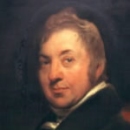 Edward Jenner was born in Berkeley, Gloucestershire on 17th May 1749.
He went to school in Wotton-under-Edge and Cirencester. At the age of 14
he was apprenticed for seven years to Mr Daniel Ludlow, a surgeon of
Chipping Sodbury. In order to complete his medical training he moved to
St. George's Hospital in London in 1770. Two years later at the age of 23,
Edward Jenner returned to Berkeley and established himself as the local
practitioner and surgeon. He also had practices in Cheltenham and London,
but preferred Berkeley. In May 1796 a dairymaid, Sarah Nelmes, consulted
Jenner about a rash on her hand. He diagnosed cowpox and saw this as an
opportunity to research his theory that people who caught cowpox from
their cows could not catch smallpox. He gave Edward Jenner was born in Berkeley, Gloucestershire on 17th May 1749.
He went to school in Wotton-under-Edge and Cirencester. At the age of 14
he was apprenticed for seven years to Mr Daniel Ludlow, a surgeon of
Chipping Sodbury. In order to complete his medical training he moved to
St. George's Hospital in London in 1770. Two years later at the age of 23,
Edward Jenner returned to Berkeley and established himself as the local
practitioner and surgeon. He also had practices in Cheltenham and London,
but preferred Berkeley. In May 1796 a dairymaid, Sarah Nelmes, consulted
Jenner about a rash on her hand. He diagnosed cowpox and saw this as an
opportunity to research his theory that people who caught cowpox from
their cows could not catch smallpox. He gave 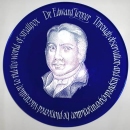 James Phipps (an 8 year old
boy) cowpox, who became mildly ill as a consequence. He then gave the boy
smallpox to test whether cowpox would give protection against the deadly
disease. As anticipated, cowpox gave immunity to smallpox. He published
his research, but he was met with opposition and it was only in 1853 that
compulsory vaccination was introduced in Britain. Jenner is acknowledged
as the Father of Immunology - the science of our body's defence against
invading bugs and chemicals. James Phipps (an 8 year old
boy) cowpox, who became mildly ill as a consequence. He then gave the boy
smallpox to test whether cowpox would give protection against the deadly
disease. As anticipated, cowpox gave immunity to smallpox. He published
his research, but he was met with opposition and it was only in 1853 that
compulsory vaccination was introduced in Britain. Jenner is acknowledged
as the Father of Immunology - the science of our body's defence against
invading bugs and chemicals.
You can visit The Edward Jenner Museum in Berkeley. |
Albert Lee (aka Mr Telecaster)
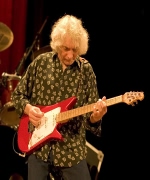 Born December 21, 1943 in Leominster, England Born December 21, 1943 in Leominster, England
He grew up in Blackheath, London. His father was a musician, and Albert studied piano. During this time, like many of his age, he became a fan of Buddy Holly, and also Jerry Lee Lewis. He took up guitar in 1958 when his parents bought him a second hand Höfner President which he later traded in for a Grazioso Futurama and left school at age 16 to play full-time the following year.
Lee was with a variety of bands from 1959 onwards, playing mostly R&B, country music and rock and roll. Lee first experienced commercial success as the lead guitarist with Chris Farlowe and The Thunderbirds.
During his time playing with Heads Hands & Feet, Lee became a "guitar hero", playing his Fender Telecaster at breakneck speed. Heads Hands & Feet became a very popular live band in the UK and also in Europe, where they appeared on the German music programme Beat-Club. |
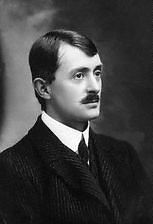 John Masefield
Dymock Poet: Masefield was born in the town of Ledbury, surrounded by
beautiful countryside in the region of Herefordshire, England, on June 1,
1878. This picturesque area, located near the border of Wales, was
described by Masefield as his ‘Paradise’. As a young boy, Masefield was
able to roam his nearby countryside, delighting in watching the ships
moving up and down the local canal; wandering alone through the meadows
and woods; and taking an interest in and observing the beauty of the
natural flora and fauna of the area. Although the natural surroundings
were beautiful to Masefield, he encountered several tragedies early in his
life. At the age of 6, his mother passed away shortly after giving birth
to John’s youngest sister, Norah. Fourteen months later, both of his then
living Grandparents passed away, and in 1890, his father suffered a mental
breakdown, the family was required to hospitalise him. A year later, he
also passed away. Poet, novelist, dramatist and journalist, John
Masefield's literary career was rich and varied, and although his
reputation waned in later years, he is again being recognized for his wide
range, encompassing ballads, nature poetry and mythological narrative, and
for his attempt to make poetry a popular art. |
Joe Meek
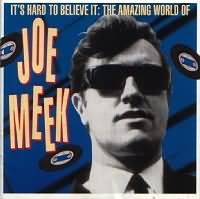 b. Robert George Meek, 5 April 1929, Newent,
Gloucestershire, England, d. 3 February 1967, London, England. His name
might not be familiar, but many people can hum his greatest hit -
‘Telstar’. Britain's premier independent record producer of the early 60s,
Meek was equally renowned for his pioneering recording techniques and
eccentric personality. His career began in 1954, when he joined IBC, the
leading independent recording studio of the era. Originally an engineer,
he worked on a number of hits, including Lonnie Donegan's "Cumberland
Gap", Frankie Vaughan's "Green Door", Johnny Duncan's "Last Train To San
Fernando" and Humphrey Lyttelton's "Bad Penny Blues". He also turned his
hand to songwriting, penning Tommy Steele's "Put A Ring On Her Finger" in
1958. b. Robert George Meek, 5 April 1929, Newent,
Gloucestershire, England, d. 3 February 1967, London, England. His name
might not be familiar, but many people can hum his greatest hit -
‘Telstar’. Britain's premier independent record producer of the early 60s,
Meek was equally renowned for his pioneering recording techniques and
eccentric personality. His career began in 1954, when he joined IBC, the
leading independent recording studio of the era. Originally an engineer,
he worked on a number of hits, including Lonnie Donegan's "Cumberland
Gap", Frankie Vaughan's "Green Door", Johnny Duncan's "Last Train To San
Fernando" and Humphrey Lyttelton's "Bad Penny Blues". He also turned his
hand to songwriting, penning Tommy Steele's "Put A Ring On Her Finger" in
1958.
Meek's tempestuous personality and often violent behaviour
alienated many old friends, while his homosexuality produced feelings of
self-loathing and engendered a fear of imminent scandal.
His mental instability worsened after experimenting with
LSD and there were successive personal and business problems. He became
paranoid about his professional work and was also being blackmailed for
small amounts of money by past sexual partners. On 3 February 1967, he was
involved in a bizarre shooting incident in which he fatally shot his
landlady before turning the gun on himself. It was the end of a sometimes
brilliant but frustratingly erratic career. |
 Geoffrey of Monmouth
Born in 1090, Geoffrey of Monmouth came of a Breton family and
appears to have been schooled in the town's priory before continuing his
studies and work at Oxford. Here he was entrusted with the task of
translating a very old manuscript from the ancient British language into
Latin. From this and other sources he completed his "History of the
British Kings" which contains references to Cymbaline and Lear, the coming
of Christianity, the departure of the Romans and the exploits of the
legendary King Arthur.
He was alone in describing many of what we now call Arthurian
conventions. He is the first to mention Caliburn, Avalon, and the story of
Arthur's birth at Tintagel . As has been shown, he borrowed from Celtic
tradition for other elements of his story. |
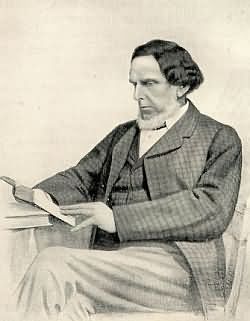 Robert Forester Mushet
Robert Mushet was born in 1812 at Coleford, the son of
David Mushet and his wife Agnes. He was baptised on 23 July 1812 at
Newland parish church. who perfected Bessemer's steel-making process here
in the Forest of Dean.
David Mushet, a Scot, came to Coleford in 1810
to run the Whitecliff Furnace but very shortly decided to build his own
Iron Works on the edge of Coleford at Gorsty Knoll. His Iron Works were
referred to as Dark Hill Iron Works (a misnomer as Dark Hill is on the
other side of the road). There was also a Brick Works. David Mushet is
buried at Staunton Churchyard, just over 2 miles from Coleford, together
with his wife and daughters - Henrietta (Roberts) and Agnes (Jarrett).
His son Robert Forester Mushet, born in Coleford in 1811, was also a
metallurgist and perfected the Bessemer process for making steel in
1856/7. The first steel rail was forged at Ebbw Vale from his metal and
placed in Derby Station in 1857. He also invented high-speed
self-hardening steel in 1868, though because of lack of funding and ill
health he lost his patents. Robert's daughter Lisowna Mary visited
Bessemer and persuaded him to pay off her father's debts. Robert, his wife
Mary Ann (nee Thomas of St Briavels) and their daughter Lisowna Mary are
all buried at Cheltenham Cemetery. His sons Edward Maxwell Thomas and
Henry Charles Brooklyn both moved to Sheffield to work with the Osborn
family in developing their father's invention. A chairman of the company,
Frederick Marmaduke Osborn, wrote the story of the Mushets as known to him
personally in 1950 and his book was published posthumously by his brother
Samuel Osborn in 1952. The achievements of both David and Robert Mushet
are acknowledged locally with a road and the local industrial estate being
named after them, but outside the Forest of Dean very little is known of
their considerable achievements. |
Horatio Lord Nelson
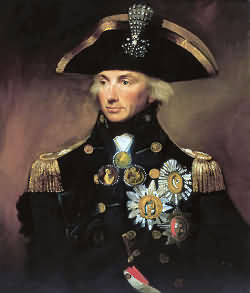 Horatio Nelson, 1st Viscount Nelson, KB (September 29,
1758 – October 21, 1805) was a British admiral who won fame as a leading
naval commander. He is famous for his participation in the Napoleonic
Wars, most notably in the Battle of Trafalgar, where he lost his life. He
became a naval hero in the United Kingdom, eclipsing Admiral Robert Blake
in fame. His biography by the poet Robert Southey appeared in 1813, while
the wars were still being fought. His love affair with Emma Hamilton, the
wife of the British ambassador to Naples is also well known, and he is
honoured by the London landmark of Nelson's Column, which stands in
Trafalgar Square. Horatio Nelson, 1st Viscount Nelson, KB (September 29,
1758 – October 21, 1805) was a British admiral who won fame as a leading
naval commander. He is famous for his participation in the Napoleonic
Wars, most notably in the Battle of Trafalgar, where he lost his life. He
became a naval hero in the United Kingdom, eclipsing Admiral Robert Blake
in fame. His biography by the poet Robert Southey appeared in 1813, while
the wars were still being fought. His love affair with Emma Hamilton, the
wife of the British ambassador to Naples is also well known, and he is
honoured by the London landmark of Nelson's Column, which stands in
Trafalgar Square.
Two visits to the town by the great Admiral obviously
left a great impression on Monmouthians since his death was drunk at their
public gatherings for many years after he died. In the summer of 1802 he
gave his approval to the Naval Temple on the Kymin Hill above the town,
and dined in style at the old coaching Inn "The Beaufort" where he made a
patriotic speech and praised the townsfolk for their loyalty to the
King.
Monmouth is home to a magnificent collection of Nelson
material.
|
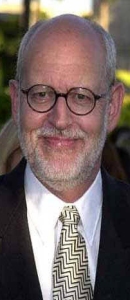 Richard Frank Oznowicz
Another actor (born May 25, 1944) in Hereford is the American Frank Oz. His parents
were living in the city at the time of his birth although he only spent
the first weeks of his life here before they moved on. Better known as
Frank Oz, is an American film director, actor and puppeteer. He was born
in Hereford, England to French parents — a Jewish father and Catholic
mother, both of Polish descent. Oz moved to California, United States with
his parents when he was five years old.
Oz is best known for his work as a puppeteer, performing
with Jim Henson's Muppets. His characters have included Miss Piggy, Fozzie
Bear, and Sam the Eagle on The Muppet Show, and Grover, Cookie Monster,
Harvey Kneeslapper, and Bert on Sesame Street, among many others. In
addition to performing a variety of characters, Oz has been one of the
primary collaborators responsible for the development of the Muppets over
the last 30 years. Possibly Oz's most famous character is the diminutive
Jedi Master Yoda from George Lucas' Star Wars series. Oz performed the
voice and puppet (where applicable) for Yoda in Star Wars films between
1980 and 2005. Yoda first appeared in 1980's The Empire Strikes Back. Oz
had a great deal of creative input on the character, and was himself
responsible for creating the character's trademark style of reversed
grammar.
 Oz began his behind-the-camera work when he co-directed
the fantasy film The Dark Crystal with long-time collaborator Jim Henson.
The film featured the most advanced puppets ever created for a movie. Oz
further employed those skills in directing 1986's Little Shop Of Horrors.
The musical film starred Rick Moranis and Ellen Greene, as well as Steve
Martin, Bill Murray, John Candy, Christopher Guest, and a 15-foot-tall
talking plant (voiced by Levi Stubbs) which at times required up to 30
puppeteers to operate. Oz went on to direct Dirty Rotten Scoundrels in
1988, starring Steve Martin and Michael Caine, What About Bob? in 1991,
starring Bill Murray and Richard Dreyfuss, and HouseSitter in 1992. Later
films include The Indian in the Cupboard (1995), In & Out (1997),
Bowfinger (1999), The Score (2001), and the 2004 re-make of The Stepford
Wives. Oz began his behind-the-camera work when he co-directed
the fantasy film The Dark Crystal with long-time collaborator Jim Henson.
The film featured the most advanced puppets ever created for a movie. Oz
further employed those skills in directing 1986's Little Shop Of Horrors.
The musical film starred Rick Moranis and Ellen Greene, as well as Steve
Martin, Bill Murray, John Candy, Christopher Guest, and a 15-foot-tall
talking plant (voiced by Levi Stubbs) which at times required up to 30
puppeteers to operate. Oz went on to direct Dirty Rotten Scoundrels in
1988, starring Steve Martin and Michael Caine, What About Bob? in 1991,
starring Bill Murray and Richard Dreyfuss, and HouseSitter in 1992. Later
films include The Indian in the Cupboard (1995), In & Out (1997),
Bowfinger (1999), The Score (2001), and the 2004 re-make of The Stepford
Wives.
|
Beryl Reid (17 June 1920 - 13 October 1996)
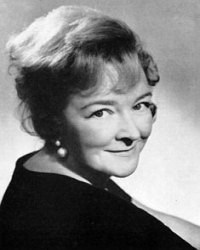 Beryl Reid was born in Hereford, the daughter of Scottish parents and
grew up in industrial Manchester, England. She left home at the age of 16
to go and work in a shop. She lasted 6 weeks. She applied for and was
accepted in a revue in the Summer season in Bridlington. She had no formal
training but joined the Royal National Theatre in London as a comedy
actress. Her first big success came in the BBC radio show Educating Archie
(a ventriloquist - on the radio). She played the naughty schoolgirl,
Monica, and later, the Brummie Marlene. Her film roles were few and far
between, but always well received. She transferred her Tony award winning
performance of the lesbian radio star to the screen in The Killing of
Sister George (1968). But she was best known and loved for her (slightly
tipsy) older ladies such as in The Beiderbecke Tapes (1987) and Tinker,
Tailor, Soldier, Spy (1979). She also played Captain Briggs in the Doctor
Who story Earthshock. Beryl lived in Honeypot Cottage, on the banks of the
Thames in Berkshire and had a number of stray cats. She married twice and
was presented with an OBE in 1986. She was dyslexic and always found it
hard to learn her lines.She died of pneumonia on 13th October 1996
following knee surgery, aged 76. Beryl Reid was born in Hereford, the daughter of Scottish parents and
grew up in industrial Manchester, England. She left home at the age of 16
to go and work in a shop. She lasted 6 weeks. She applied for and was
accepted in a revue in the Summer season in Bridlington. She had no formal
training but joined the Royal National Theatre in London as a comedy
actress. Her first big success came in the BBC radio show Educating Archie
(a ventriloquist - on the radio). She played the naughty schoolgirl,
Monica, and later, the Brummie Marlene. Her film roles were few and far
between, but always well received. She transferred her Tony award winning
performance of the lesbian radio star to the screen in The Killing of
Sister George (1968). But she was best known and loved for her (slightly
tipsy) older ladies such as in The Beiderbecke Tapes (1987) and Tinker,
Tailor, Soldier, Spy (1979). She also played Captain Briggs in the Doctor
Who story Earthshock. Beryl lived in Honeypot Cottage, on the banks of the
Thames in Berkshire and had a number of stray cats. She married twice and
was presented with an OBE in 1986. She was dyslexic and always found it
hard to learn her lines.She died of pneumonia on 13th October 1996
following knee surgery, aged 76.
|
Dennis Potter (1935-1994)
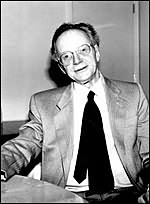 Born Coleford in the Forest of Dean, British dramatist, novelist, television and screenwriter,
and non-fiction writer, whose fusion of fantasy and reality broke the
rules and the limits of television dramas. Potter's plays showed an
original and inventive use of the medium, and he gained cult status in his
native Britain and the world. Among his best-known works are PENNIES FROM
HEAVEN (1978), about a sheet-music salesman, and THE SINGING DETECTIVE
(1986), in which Philip Marlow, a bedridden, suffering writer of detective
stories, is losing his mind when his real-life memories mix with pop
culture fantasies. Potter wrote: "The people of this district are
conscious of the unique identity of their birthplace, and speak a dialect
so forceful and individual that, at times, it might almost be another
language." Three of Potter's four great-grandfathers were Forest miners.
His father Walter Potter was continued the family tradition. Potter's
mother had been born and raised in London, but her mother was a Forester.
Potter was educated at Bell's Grammar School. After a language course
during his national service, Potter became a Russian-language clerk in the
War Office. In 1959 he received his B.A. from New College, Oxford, where
he studied philosophy, politics and economics. On the same year he married
Margaret Morgan, a journalist; they had two daughters and a son. In 1964
Potter was an editorial writer for the London Sun, but he resigned in the
same year to become a free-lance writer. Born Coleford in the Forest of Dean, British dramatist, novelist, television and screenwriter,
and non-fiction writer, whose fusion of fantasy and reality broke the
rules and the limits of television dramas. Potter's plays showed an
original and inventive use of the medium, and he gained cult status in his
native Britain and the world. Among his best-known works are PENNIES FROM
HEAVEN (1978), about a sheet-music salesman, and THE SINGING DETECTIVE
(1986), in which Philip Marlow, a bedridden, suffering writer of detective
stories, is losing his mind when his real-life memories mix with pop
culture fantasies. Potter wrote: "The people of this district are
conscious of the unique identity of their birthplace, and speak a dialect
so forceful and individual that, at times, it might almost be another
language." Three of Potter's four great-grandfathers were Forest miners.
His father Walter Potter was continued the family tradition. Potter's
mother had been born and raised in London, but her mother was a Forester.
Potter was educated at Bell's Grammar School. After a language course
during his national service, Potter became a Russian-language clerk in the
War Office. In 1959 he received his B.A. from New College, Oxford, where
he studied philosophy, politics and economics. On the same year he married
Margaret Morgan, a journalist; they had two daughters and a son. In 1964
Potter was an editorial writer for the London Sun, but he resigned in the
same year to become a free-lance writer.
|
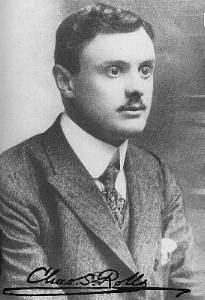 Charles Rolls 1877 - 1910
Hon. Charles Rolls, son of Lord Llangattock, was also an
engineer by training and a perfectionist by nature. After Eton and
Cambridge, he became a pioneer motor car racing driver, and established a
London dealership selling expensive high-quality foreign cars. A patriot,
he was in search of a manufacturer of high quality British cars, and after
a famous meeting in 1904 the two men went into business together as
Rolls-Royce. Royce designed and manufactured the cars, and Rolls marketed
them. They were to be called Rolls-Royce. Subsequently Rolls-Royce Motors
was formed. Lived in the Hendre, just outside the town, he was a keen
racing cyclist, a highly accomplished mechanic, a pioneer motorist and an
experienced balloonist and aviator. Rolls co-founded the Rolls-Royce
Company and was the first man to make a non-stop crossing of the English
Channel 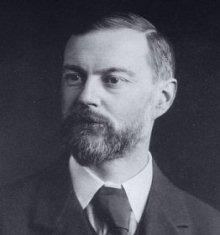 by aeroplane. He died in a flying accident at Bournemouth in 1910
and his statue stands in Agincourt Square. Rolls, a pioneer aviator, died
in a plane crash in 1910. Frederick Royce died in 1933. by aeroplane. He died in a flying accident at Bournemouth in 1910
and his statue stands in Agincourt Square. Rolls, a pioneer aviator, died
in a plane crash in 1910. Frederick Royce died in 1933.
Frederick Royce 1863 - 1933
Son of a failed miller, was an engineer by training and a
perfectionist by nature. He was raised in poor circumstances but went on
to found Royce and Co, an electrical engineering firm specialising in
electrical cranes and winches. In 1903 he turned his attention to the new
and exciting motor car hobby, and by early 1904 he had designed and built
a batch of three Royce motor cars. They were of exceptionally high
quality. |
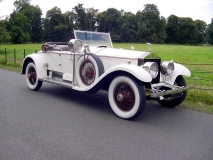 |
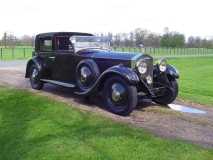 |
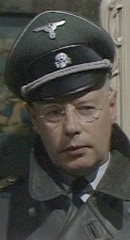 Clifford Rose
The good citizens of Leominster shouldn't forget
'Clifford Rose', aka 'Kessler' and 'Secret Army' who grew up in Ludlow
Leominster area, and who still often visits his son Jon and
daughter-in-law who reside there.
Clifford Rose is a British classical actor (born October
24, 1929 in Herefordshire, England).His most notable role was as the
character Sturmbannführer Ludwig Kessler in the BBC World War II
television drama Secret Army and its sequel Kessler.He also played leading
roles in Alan Bleasdale's drama GBH, Fortunes of War, and The Pallisers.
Additionally he appeared as Rorvik in the Doctor Who story Warriors'
Gate. Recently completed work includes the movie Wallis and Edward, in
which he plays King George V of the United Kingdom. |
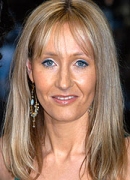 J. K. Rowling
J. K. Rowling grew up in Gloucestershire and went to
School in Tutshill. She was born in Chipping Sodbury in 1965. When she was
nine her family moved to Tutshill near Chepstow in the Forest of Dean. She
has always wanted to be a writer. Her first book was called Rabbit.
She left Chepstow for Exeter University, where her course
included one year in Paris. The Harry Potter books were filmed right here
in Gloucestershire with a lot of filming being done in Gloucester
Cathedral. |
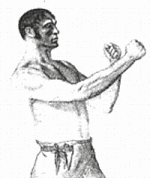 Tom Spring
Tom Spring (born February 22, 1795 - died August 20, 1851)
Tom Spring was an English bare-knuckle fighter.
He was heavyweight champion of England in 1821 until his retirement in 1824.
After his retirement he became landlord of the "Castle Inn" at Holborn, where he arranged the patronage and contracts of many of the major boxing events of the period while overseeing fair play in the ring. |
Edward Thomas
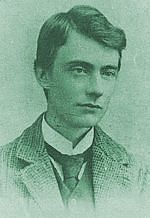 Dymock Poet: Edward Thomas was born in London in 1878 and educated at
St Paul’s School and Lincoln College, Oxford. While still an
undergraduate, he published his first book, The Woodland Life, and married
Helen Noble, with whom he had three children. Thomas became a professional
author, producing over twenty prose books, as well as a novel (The
Happy-Go-Lucky Morgans), a biography of Richard Jefferies, and critical
studies of Maurice Maeterlinck, Lafcadio Hearn, George Borrow, Walter
Pater, Swinburne and Keats. He also introduced editions of Borrow, George
Herbert, Christopher Marlowe and William Cobbett, and wrote hundreds of
book reviews and articles. Encouraged by Robert Frost, he began writing
poetry in 1914 producing a remarkable body of poetry in the next few
years. Only a few poems were published in his lifetime, under the
pseudonym Edward Eastaway; Poems by Edward Thomas was published in October
1917 and the first edition of his Collected Poems in 1920. Thomas joined
the Artists’ Rifles in 1915. He was killed on Easter Sunday 1917 during
the Battle of Arras. Dymock Poet: Edward Thomas was born in London in 1878 and educated at
St Paul’s School and Lincoln College, Oxford. While still an
undergraduate, he published his first book, The Woodland Life, and married
Helen Noble, with whom he had three children. Thomas became a professional
author, producing over twenty prose books, as well as a novel (The
Happy-Go-Lucky Morgans), a biography of Richard Jefferies, and critical
studies of Maurice Maeterlinck, Lafcadio Hearn, George Borrow, Walter
Pater, Swinburne and Keats. He also introduced editions of Borrow, George
Herbert, Christopher Marlowe and William Cobbett, and wrote hundreds of
book reviews and articles. Encouraged by Robert Frost, he began writing
poetry in 1914 producing a remarkable body of poetry in the next few
years. Only a few poems were published in his lifetime, under the
pseudonym Edward Eastaway; Poems by Edward Thomas was published in October
1917 and the first edition of his Collected Poems in 1920. Thomas joined
the Artists’ Rifles in 1915. He was killed on Easter Sunday 1917 during
the Battle of Arras.
|
Thomas Traherne 1636-1674
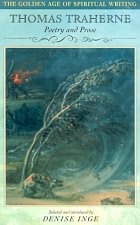 Thomas Traherne was born the son of a Hereford shoemaker, in about 1636. Thomas had a good education and entered Brasenose College at Oxford University from 1652, achieving an M.A. in arts and divinity in 1661. In the meantime, he was admitted in 1657 to the rectory of Credenhill, near Hereford and was ordained in 1660. After being a parish priest for ten years, he became, from 1667, the private chaplain to Sir Orlando Bridgeman, on his appointment as Lord Keeper of the Seals of Charles II. Evidence in parish records and the reports of churchwardens suggest that even after this appointment Traherne spent the majority of his time in the parish: Traherne was described by his churchwarden in 1673 as being "continually resident amongst us". He was, according to his wardens, "a good and Godlie man, well Learned ...a good Preacher...a very devout liver". After seven years in this service, Traherne died in his patron's house at Teddington, near Hampton court, and was buried on 10 October, 1674, in the church there. Thomas Traherne was born the son of a Hereford shoemaker, in about 1636. Thomas had a good education and entered Brasenose College at Oxford University from 1652, achieving an M.A. in arts and divinity in 1661. In the meantime, he was admitted in 1657 to the rectory of Credenhill, near Hereford and was ordained in 1660. After being a parish priest for ten years, he became, from 1667, the private chaplain to Sir Orlando Bridgeman, on his appointment as Lord Keeper of the Seals of Charles II. Evidence in parish records and the reports of churchwardens suggest that even after this appointment Traherne spent the majority of his time in the parish: Traherne was described by his churchwarden in 1673 as being "continually resident amongst us". He was, according to his wardens, "a good and Godlie man, well Learned ...a good Preacher...a very devout liver". After seven years in this service, Traherne died in his patron's house at Teddington, near Hampton court, and was buried on 10 October, 1674, in the church there.
Thomas was one of the English Metaphysical poets and yet, in his lifetime, only one of his works was ever printed.
|
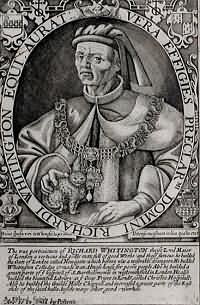 Dick Whittington
Dick Whittington was born around 1350 in Gloucester to
William Whittington, Lord of Pauntley. When he was thirteen he was sent to
London to be apprenticed to the Mercers' Company. Later he was to become
the greatest merchant in medieval England. He supplied silks from Peking
for the wedding dresses of the daughters of King Henry IV and also lent
money to the king. He become mayor of London four times, in 1397, 1398,
1406 and 1419.
The portrait is an inscription in English proclaiming
his many good works. |
Sir Jimmy Young
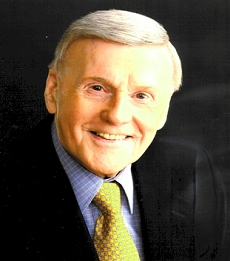 One time singer and currently still a Radio 2 presenter.
Originally named Leslie Ronald Young, Jimmy was born 21 September 1923 in
Cinderford, Gloucestershire. The son of a miner, he was an excellent boxer
and rugby player, but turned down an offer of a professional career with
top rugby league club, Wigan. Always keen on music, he was taught to play
the piano by his mother, and received professional voice training. He
worked as a baker and an electrician before joining the Royal Air Force in
1939. After demobilization he intended training as a teacher, but was
spotted, singing at a sports club, by BBC producer George Innes, and made
his first broadcast two weeks later, subsequently touring the UK variety
circuit. Jimmy joined the BBC in August 1949, after being offered a job by
BBC producer George Inns, whilst playing piano at a swimming club. By the
time he was 24, he had made 150 broadcasts! Margaret Thatcher, the former
UK Prime Minister, stated publicly that Jimmy Young was her favourite
broadcaster. His show included Raymondo who would ask "what's the recipe
today, Jim?'' He included a guest which he called the 'Legal Beagle' who
was a solicitor answering listeners legal problems. One time singer and currently still a Radio 2 presenter.
Originally named Leslie Ronald Young, Jimmy was born 21 September 1923 in
Cinderford, Gloucestershire. The son of a miner, he was an excellent boxer
and rugby player, but turned down an offer of a professional career with
top rugby league club, Wigan. Always keen on music, he was taught to play
the piano by his mother, and received professional voice training. He
worked as a baker and an electrician before joining the Royal Air Force in
1939. After demobilization he intended training as a teacher, but was
spotted, singing at a sports club, by BBC producer George Innes, and made
his first broadcast two weeks later, subsequently touring the UK variety
circuit. Jimmy joined the BBC in August 1949, after being offered a job by
BBC producer George Inns, whilst playing piano at a swimming club. By the
time he was 24, he had made 150 broadcasts! Margaret Thatcher, the former
UK Prime Minister, stated publicly that Jimmy Young was her favourite
broadcaster. His show included Raymondo who would ask "what's the recipe
today, Jim?'' He included a guest which he called the 'Legal Beagle' who
was a solicitor answering listeners legal problems.
|
|